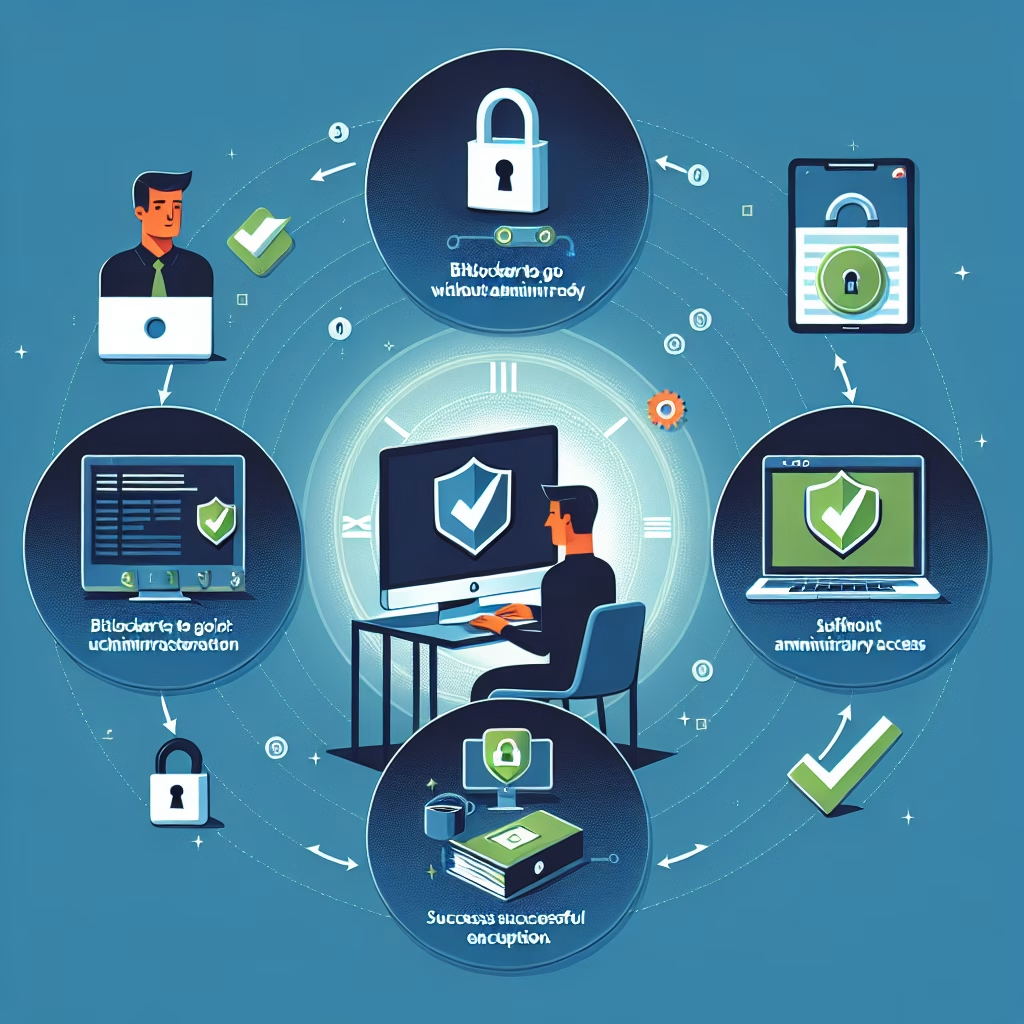BitLocker To Go Without Administrator
Summary:
BitLocker To Go is a Windows feature that encrypts removable drives (USB flash drives, external HDDs) using BitLocker Drive Encryption. When operated without administrator privileges, users can still encrypt and decrypt drives if granted appropriate permissions by IT policies. Common scenarios include standard users encrypting personal drives on corporate devices or using BitLocker To Go on systems with limited administrative access. However, absence of admin rights can complicate troubleshooting and recovery, particularly if hardware or policy restrictions prevent key retrieval.
What This Means for You:
- Immediate Impact: Standard users can encrypt drives but may face roadblocks in recovery or policy conflicts, such as being unable to suspend encryption or reset passwords.
- Data Accessibility & Security: Ensure recovery keys are backed up in advance; without admin rights, restoring access becomes nearly impossible if the key is lost.
- System Functionality & Recovery: Use alternative authentication methods like password-based unlocking if PINs or smart cards are restricted by policy.
- Future Outlook & Prevention Warning: Always verify BitLocker Group Policy settings before encrypting drives, and avoid relying on ad-hoc encryption without centralized key management.
Explained: BitLocker To Go Without Administrator
Solution 1: Using the Recovery Key
If you’re locked out of a BitLocker To Go drive without admin rights, the recovery key is the primary way to regain access. When encryption is enabled, BitLocker generates a 48-digit recovery key, which can be saved to a file, printed, or stored in a Microsoft account. To unlock the drive:
- Insert the encrypted USB drive into the PC.
- When prompted for authentication, click
More Optionsand selectEnter Recovery Key. - Input the 48-digit key (dashes optional) and click
Unlock.
If the key was saved to a file, locate it on another device or in your Microsoft account (under Device Encryption Settings). Without admin rights, this is the only self-service recovery method.
Solution 2: Policy-Based Unlocking
In corporate environments, BitLocker To Go behavior is often controlled by Group Policy. If standard users cannot unlock a drive, check if:
- The policy
Require password for removable data drivesis enforced (found underComputer Configuration > Administrative Templates > Windows Components > BitLocker Drive Encryption > Removable Data Drives). - Smart card or certificate-based authentication is mandated. A workaround may involve requesting temporary exceptions from IT.
Standard users cannot modify these policies but can verify settings using gpresult /h report.html (requires read permissions).
Solution 3: Data Recovery via Command Line
If GUI recovery fails, use PowerShell to force unlock the drive (limited to password-protected drives):
manage-bde -unlock X: -passwordReplace X: with the drive letter. This may bypass GUI restrictions but still requires knowing the password. Without admin rights, advanced tools like repair-bde are inaccessible.
Solution 4: Backing Up Data Before Reformating
If all else fails, reformatting the drive erases encryption but also destroys data. To salvage files:
- Use a secondary admin-authorized PC to unlock the drive (if policy permits).
- Alternatively, boot into a Linux live environment (e.g., Ubuntu USB) to access unencrypted partitions (not possible with full-disk encryption).
Warning: This violates BitLocker’s security design and is only a last resort.
People Also Ask About:
- Can I enable BitLocker To Go without admin rights? Only if Group Policy allows standard users to encrypt removable drives.
- What happens if I lose the recovery key? Without admin assistance or a backup, data is irrecoverable.
- Does BitLocker To Go work on macOS/Linux? No, decryption requires Windows or third-party tools like
dislocker(Linux). - Why is my USB drive read-only after unlocking? Check disk permissions or corruption via
chkdsk X: /f(admin needed for repairs).
Other Resources:
Suggested Protections:
- Store recovery keys in multiple secure locations (e.g., Microsoft account, printed copy).
- Use password + recovery key authentication for drives if policy permits.
- Avoid encrypting drives on systems where you lack admin rights unless necessary.
- Regularly test access to recovery keys before emergencies arise.
Expert Opinion:
BitLocker To Go’s reliance on admin-defined policies highlights a critical trade-off: usability versus security. Organizations often lock down settings to prevent data leaks, but this can strand users without IT support. Prioritizing centralized key management—even for non-admin users—ensures security without sacrificing recoverability.
Related Key Terms:
- BitLocker recovery key
- Removable drive encryption
- Group Policy settings
- Windows data security
- Non-admin BitLocker access
*Featured image sourced by DallE-3





